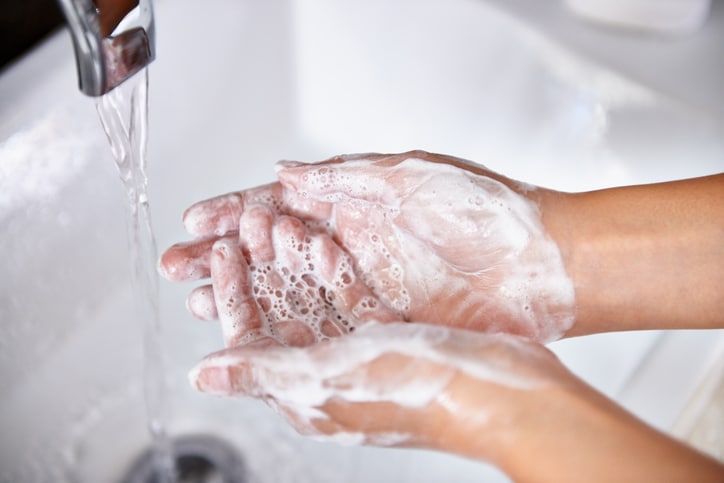新埔捷運站1號出口 旁邊7-11巷子進入20公尺 看到夏朵美髮左轉
樂觀的好處
The 5 Benefits of Being Optimistic
Zach Cutler
When running a business, as we all know, there will be difficult days, hard times and stressful periods. Although it’s not easy to spot the silver linings, having a positive attitude can help us push through rough patches.
Here are a few benefits optimism and positivity can bring, even in the face of adversity:
1. See failure as a new start.
Failure is not the end, in fact it is often the beginning of something great. When things are good, we coast along without making any quantum leaps. When things go bad, our world gets shaken up, which requires us to grow, see new things and start afresh.
Optimism allows us to learn from failures, pick up the pieces and move on to something greater. The greatest business ideas, and times in life, can be born from failure.
2. Be expansive.
Pessimism makes us contract and shy away from new or adventurous things. It causes us to fixate on the negative possibilities and be trapped by fear of failure.
Optimism, however, opens us up to new ideas, new experiences and new possibilities. It frees us up to consider new options and change our businesses, and lives, for the better. It helps us look to the future and create expansive, evolving realities.
3. Get healthy.
Dwelling on negativity isn’t healthy. Not only are optimists generally happier and less stressed, but also they tend to have healthier hearts.
In a study of more than 5,100 adults, researchers from the University of Illinois found that those who were the most optimistic were 76 percent more likely to have health scores in an ideal range. In addition, optimists had significantly better blood sugar and cholesterol levels, exercised more, and had healthier body mass indexes, and were less likely to smoke than pessimists.
Focusing on the positive, instead of the negative, improves mental well-being, which can motivate individuals to take better care of their bodies, as well.
4. Spread good vibes.
Optimism is contagious. Having an upbeat attitude can inspire everyone around us. A survey conducted by Gallup found that only 35 percent of U.S. managers are engaged in their jobs. This lack of engagement and its impact on employees costs the U.S. an estimated $77 billion to $96 billion each year.
Attitude is everything. Optimistic leaders can help motivate and engage their employees. A positive team will be driven to accomplish goals and work together to move things forward.
5. It is the best choice.
There is no better alternative to optimism. Pessimism doesn’t achieve much, and doesn’t have any benefits over optimism. Being optimistic obviously doesn’t mean seeing rainbows 24-7. Everything won’t always be great. But optimism helps us see new opportunities, learn from different situations, and keep moving.
洗手要唱2遍生日快樂歌!
When and How to Wash Your Hands
Handwashing is one of the best ways to protect yourself and your family from getting sick. Learn when and how you should wash your hands to stay healthy.
You can help yourself and your loved ones stay healthy by washing your hands often, especially during these key times when you are likely to get and spread germs:
Before, during, and after preparing food
Before eating food
Before and after caring for someone at home who is sick with vomiting or diarrhea
Before and after treating a cut or wound
After using the toilet
After changing diapers or cleaning up a child who has used the toilet
After blowing your nose, coughing, or sneezing
After touching an animal, animal feed, or animal waste
After handling pet food or pet treats
After touching garbage
Follow Five Steps to Wash Your Hands the Right Way
Washing your hands is easy, and it’s one of the most effective ways to prevent the spread of germs. Clean hands can stop germs from spreading from one person to another and throughout an entire community—from your home and workplace to childcare facilities and hospitals.
Follow these five steps every time.
Wet your hands with clean, running water (warm or cold), turn off the tap, and apply soap.
Lather your hands by rubbing them together with the soap. Lather the backs of your hands, between your fingers, and under your nails.
Scrub your hands for at least 20 seconds. Need a timer? Hum the “Happy Birthday” song from beginning to end twice.
Rinse your hands well under clean, running water.
Dry your hands using a clean towel or air dry them.
Why? Read the science behind the recommendations.
Use Hand Sanitizer When You Can’t Use Soap and Water
You can use an alcohol-based hand sanitizer that contains at least 60% alcohol if soap and water are not available.
Washing hands with soap and water is the best way to get rid of germs in most situations. If soap and water are not readily available, you can use an alcohol-based hand sanitizer that contains at least 60% alcohol. You can tell if the sanitizer contains at least 60% alcohol by looking at the product label.
Sanitizers can quickly reduce the number of germs on hands in many situations.
However, Sanitizers do not get rid of all types of germs.
Hand sanitizers may not be as effective when hands are visibly dirty or greasy.
Hand sanitizers might not remove harmful chemicals from hands like pesticides and heavy metals.










0 意見:
張貼留言